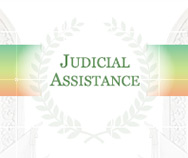Regulations for the Implementation of the Copyright Law
(Promulgated by Decree No. 359 of the State Council of the People's Republic of China on August 2, 2002, and effective as of September 15, 2002)
Article 1 These Regulations are formulated in accordance with the Copyright Law of the People's Republic of China (hereinafter referred to as "the Copyright Law").
Article 2 The term "works" as referred to in the Copyright Law means intellectual creations with originality in the literary, artistic or scientific domain, insofar as they can be reproduced in a tangible form.
Article 3 The term "creation" as referred to in the Copyright Law means intellectual activities in which literary, artistic or scientific works are directly created.
Any organizational activity, consultation, material support or other auxiliary services conducted or offered for another person's creation shall not be deemed as creation.
Article 4 For the purposes of the Copyright Law and these Regulations, the following expressions concerning works shall have the meanings hereunder assigned to them:
(1) "written works" means works expressed in written form, such as novels, poems, essays and theses;
(2) "oral works" means works expressed in form of spoken language, such as impromptu speeches, lectures and court debates;
(3) "musical works" means such works as songs and symphonic works, with or without accompanying words, which can be sung or performed;
(4) "dramatic works" means such works as dramas, operas and local traditional operas for stage performance;
(5) "qu yi works" means such works as "xiang sheng" (cross talk), "kuai shu" (clapper talk), "da gu" (ballad singing with drum accompaniment) and "ping shu" (story telling based on novels), which are mainly performed by recitation or singing, or by both;
(6) "choreographic works" means works in which ideas and feelings are or can be expressed through successive body movements, gestures, facial movements, etc;
(7) "acrobatic works" means works expressed through body movements and skills, such as acrobatics, magic and circus;
(8) "works of fine arts" means two- or three-dimensional works of the plastic arts created in lines, colours or other media which impart aesthetic effect, such as paintings, works of calligraphy and sculptures;
(9) "works of architecture" means works with aesthetic effect which are expressed in form of buildings or structures;
(10) "photographic works" means artistic works created by recording images of objects on light-sensitive or other materials with the aid of devices;
(11) "cinematographic works and works created by a process analogous to cinematography" means works which are recorded on some material, consisting of a series of images, with or without accompanying sound, and which can be projected with the aid of suitable devices or communicated by other means;
(12) "graphic works" means such works as drawings of engineering designs and product designs for the purpose of actual construction and manufacturing, and as maps and sketches showing geographical phenomena and demonstrating the fundamentals or the structure of a thing or an object;
(13) "model works" means three-dimensional works made on the basis of the shape and the structure of an object to a certain scale, for the purpose of display, test or observation.
Article 5For the purposes of the Copyright Law and these Regulations, the following expressions shall have the meanings hereunder assigned to them:
(1) "news on current affairs" means the mere facts or happenings conveyed through the media such as newspapers, periodicals and radio and television programmes;
(2) "sound recordings" means aural fixations of sounds of performances or of other sounds;
(3) "video recordings" means fixations of a connected series of related images or pictures, with or without accompanying sounds, other than cinematographic works and works created by a process analogous to cinematography;
(4) "producer of sound recordings" means the person who first makes the sound recordings;
(5) "producer of video recordings" means the person who first makes the video recordings;
(6) "performer" means an actor, or a performing group or any other person who performs literary or artistic works.
Article 6 A copyright shall subsist on the date when a work is created.
Article 7 Works of foreigners or stateless persons first published in the territory of China, as provided in the third paragraph of Article 2 of the Copyright Law, shall be protected from the date of the first publication of the works.









